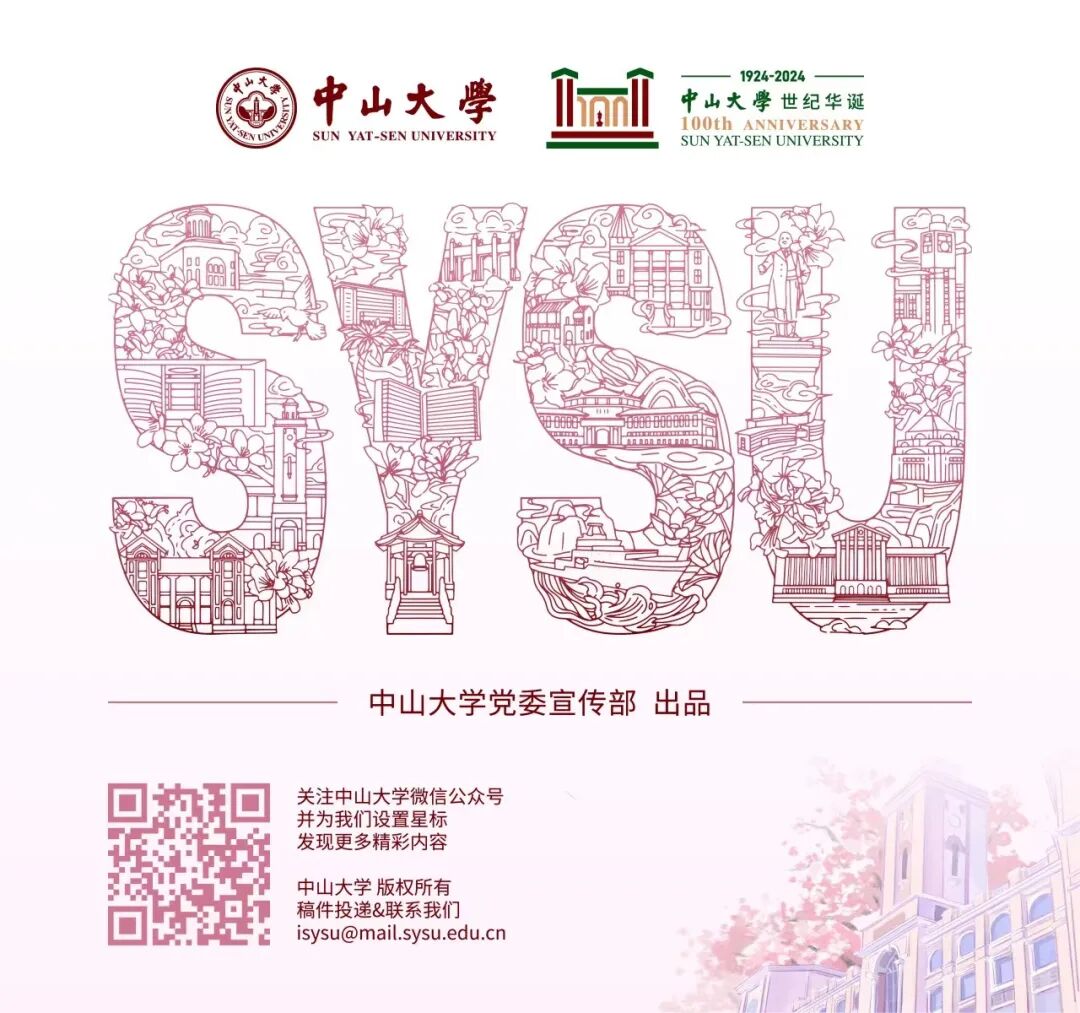
The vast and boundless universe
Every artificial satellite
is a crystallization of human wisdom and dreams
At Sun Yat-sen University
there is a student dedicated to ‘star making’
After three years of research and hard work
he led his classmates
to independently develop a student CubeSat
which is expected to become the world’s first satellite to conduct in-orbit verification of wooden outer panels
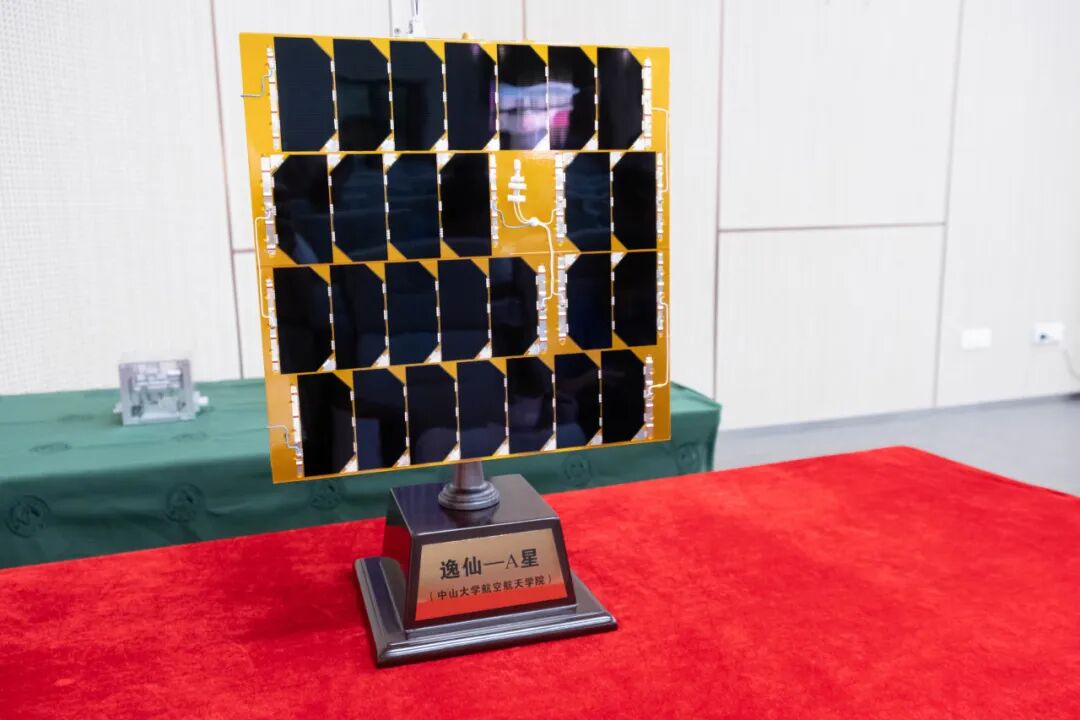
Yixian-A satellite engineering sample
A satellite fully developed by Sun Yat-sen University students
the ‘Sun Yat-sen University Student CubeSat’
is set to be launched around the centennial celebration
as a unique tribute from aerospace enthusiasts
to the centennial celebration
He is Wang Hui, the 2023 Student of the Year at Sun Yat-sen University
His name is as bright as his aspirations
Gazing at the stars, grounded in reality
His brilliance shines, illuminating the galaxy
Profile
Wang Hui, a postdoctoral researcher at the School of Aerospace Engineering, Sun Yat-sen University, a doctoral graduate in Aerospace Science and Technology in 2024, a recipient of the National Graduate Scholarship, the 2023 Student of the Year at Sun Yat-sen University, and the project leader of the Sun Yat-sen University Student CubeSat.
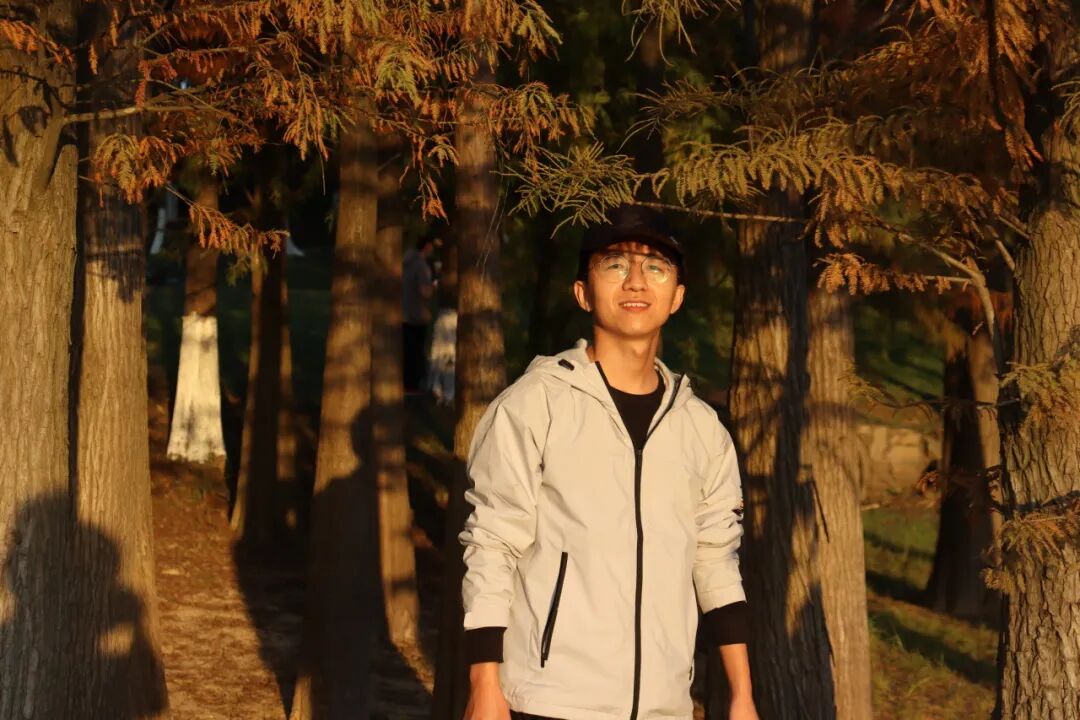
Wang Hui’s daily photo

Shenzhou takes off, the ‘star’ dream sets sail
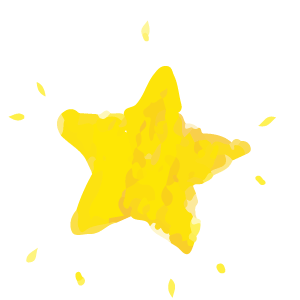
On October 5, 2003, the “Shenzhou 5” took off, fulfilling the millennium dream of flight for the Chinese nation, marking a new chapter in Chinese space exploration. The successful completion of China’s first manned space mission planted the seed of a space dream in the young heart of Wang Hui. Years later, this seed took root and connected Wang Hui’s fate tightly with the stars, he enrolled in Harbin Institute of Technology to study aircraft design and engineering, gradually moving closer to his aerospace dream.
After entering Sun Yat-sen University for his master’s degree, Wang Hui engaged in research related to spacecraft orbit and attitude control under the guidance of Professor Zhang Jinxiu. During his master’s phase, Wang Hui actively participated in research projects and various competitions. Through research practice, the innovative ideas of his peers greatly benefited him, and his interest in satellite-related research grew day by day. Additionally, the open and free academic atmosphere at Sun Yat-sen University encouraged him to continuously explore and innovate in areas of interest.
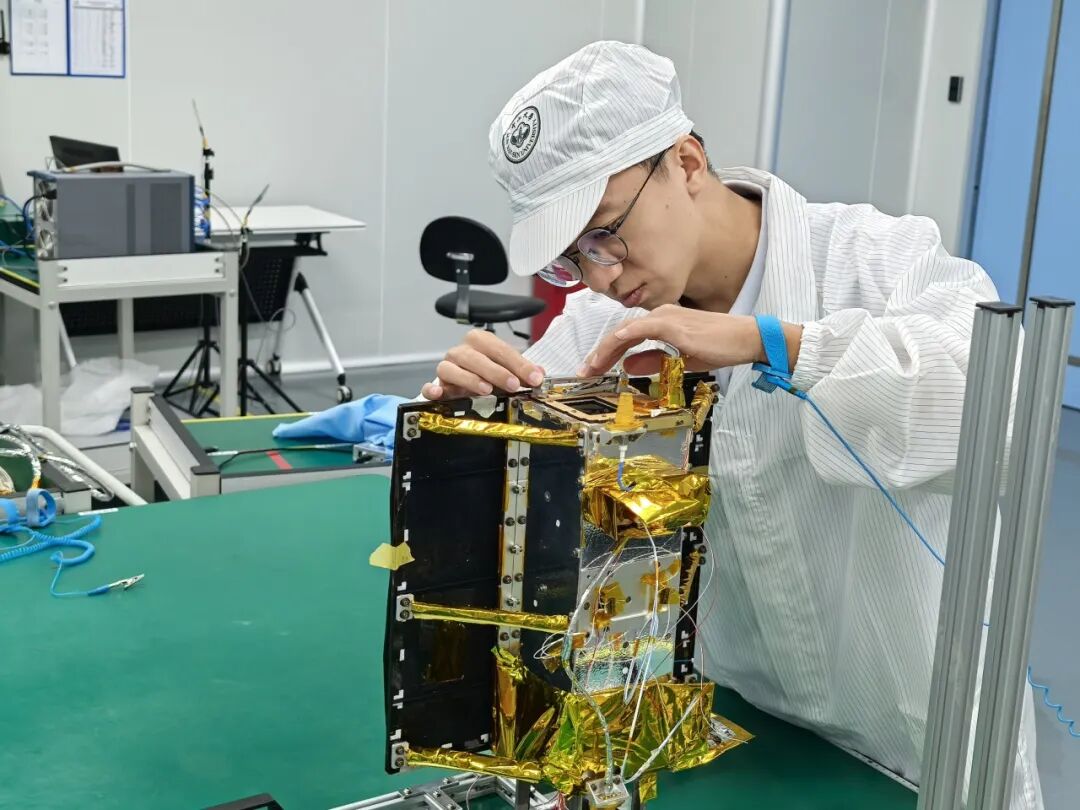
Wang Hui working in the lab
“In the relatively relaxed academic atmosphere at Sun Yat-sen University, as long as you have the ability, after meeting the normal graduation requirements, the teachers and the college will fully support everyone to do some interesting explorations.”
As research deepened, Wang Hui gradually realized that independently designing and developing a satellite was not a far-fetched dream, and the dream of ‘making a satellite’ became clearer.

Starting from scratch, sending a satellite into space

In 2021, under the guidance of the leadership of the School of Aerospace Engineering and the mentor group, Wang Hui founded the Sun Yat-sen University Micro-Nano Satellite Association and served as its first president, officially starting the ‘star-making’ plan.
At the beginning of the establishment of the student micro-nano satellite association, the team members were enthusiastic, hoping to launch the satellite within two to three years. But soon, Wang Hui discovered that applying the theoretical knowledge of satellite design learned in class to research was not an easy task.
“Although the teachers taught us about overall design, when you really push and practice, you will find that it is not entirely as you imagined.”
Satellite development is a massive project involving multiple subsystems, and it is impossible for one person to master all the necessary knowledge and experience, which raises higher demands for project management. Moreover, scientific research often has long development cycles and high sunk costs, and many students chose to withdraw from the team for various reasons during the development process. Wang Hui’s ‘star-making’ journey was not smooth.
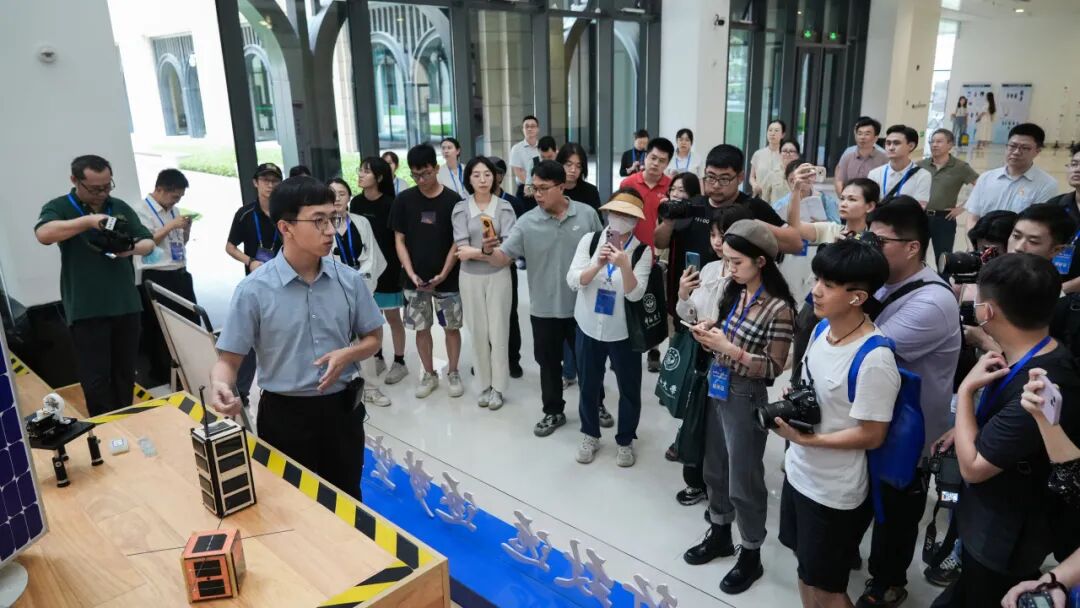
Wang Hui introducing the satellite project during the Shenzhen campus open day
Faced with difficulties, Wang Hui did not choose to retreat. He reflected on the reasons for the low sense of gain among past members, and innovatively adopted a ‘student-led development and self-management’ model, breaking down the grand goal of satellite development into many sub-projects that needed to be solved, encouraging members to use the phased results from sub-project development to participate in research competitions, apply for innovation projects, publish papers, etc., maximizing the enthusiasm of the students.
With the enthusiastic participation of the students, the team members’ projects won six first prizes, dozens of second and third prizes in national competitions. Some undergraduate students involved in the development were inspired to continue studying in the School of Aerospace Engineering during their graduate studies, becoming core members of the team and greatly accelerating the research progress of various sub-projects.
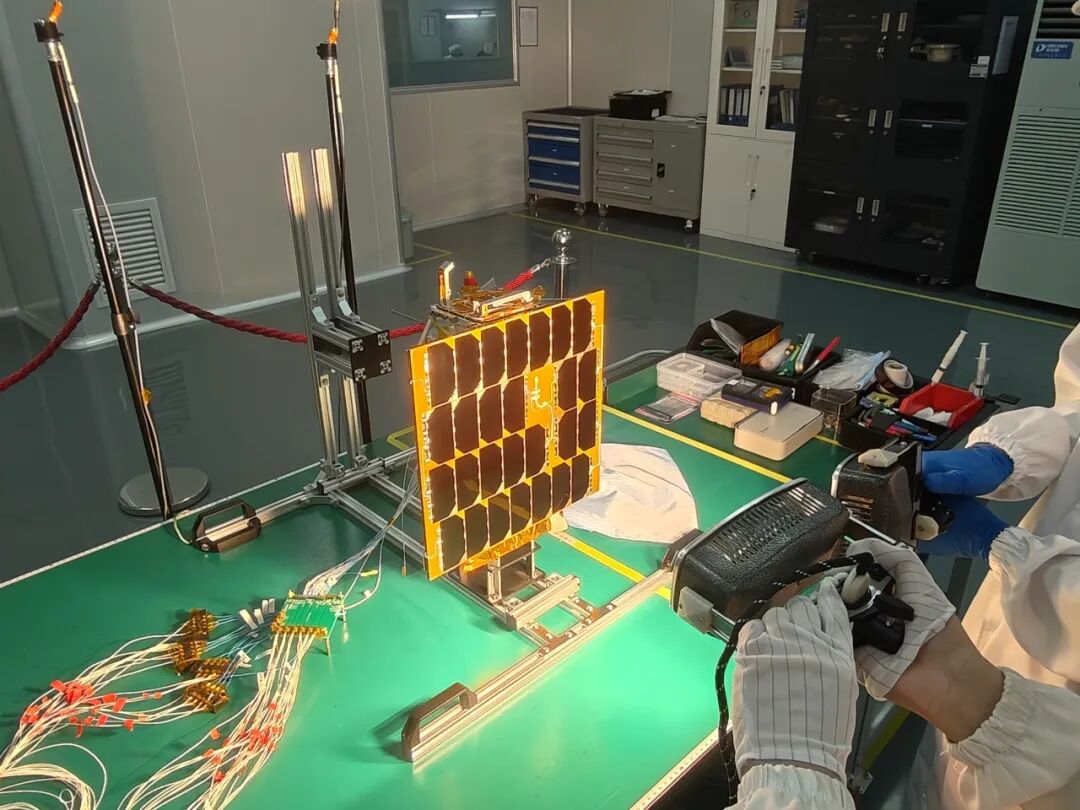
The Yixian-A satellite’s flight product is being tested
During the satellite development process, Wang Hui’s team encountered many technical challenges, among which the use of wooden outer panels was a bold innovation. Although wooden environmentally friendly materials can reduce atmospheric pollution when the satellite falls into the atmosphere, the extreme conditions of space, such as high and low temperatures, vacuum, and radiation, pose significant challenges to the stability of the materials.
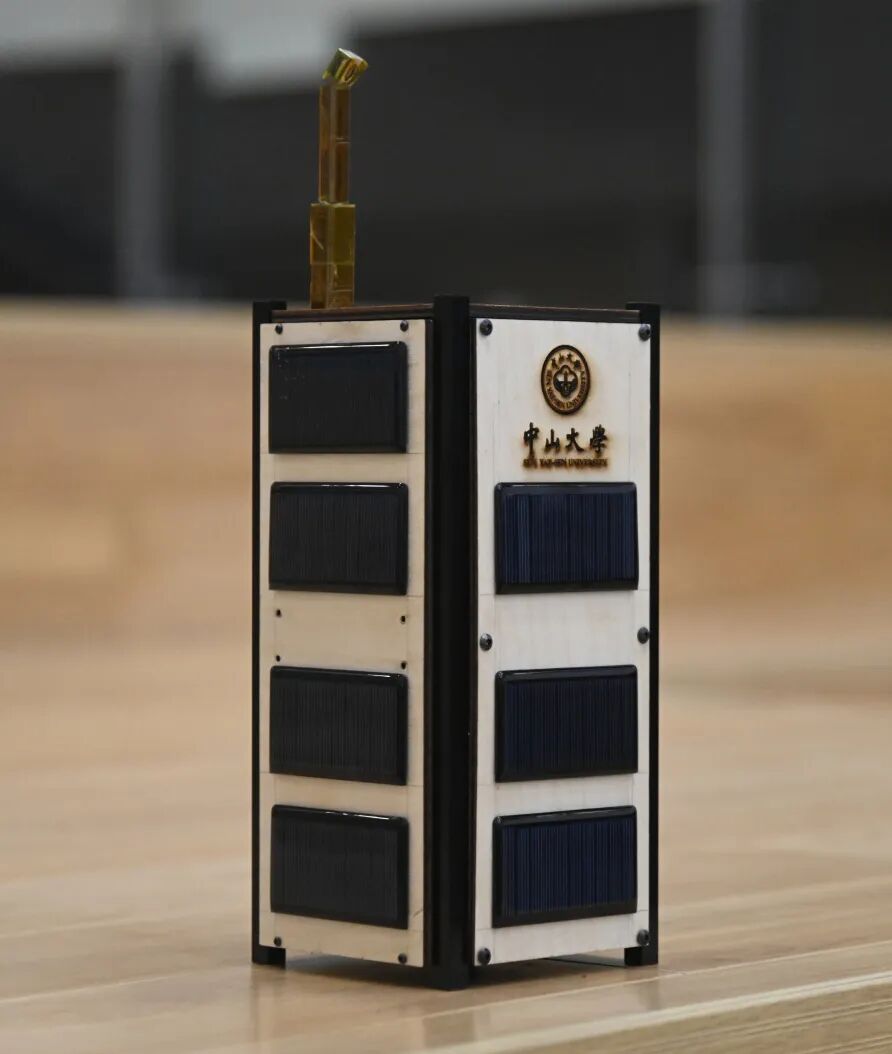
The first model prototype of the Yixian-A satellite
To overcome these technical challenges, the team collaborated with the School of Materials and the School of Advanced Manufacturing to fully leverage the advantages of interdisciplinary integration and innovation,experimenting with various types of wood and wood surface treatment technologies, and through countless experiments, ultimately found suitable wood and treatment methods to enhance the durability of the wooden materials, allowing them to maintain stability in the space environment. This means that Wang Hui’s team completed the practical development of wooden satellite outer panels ahead of researchers from Finland, Japan, and other countries, and is expected to be the first in the world to conduct in-orbit experiments with wooden outer panel satellites.
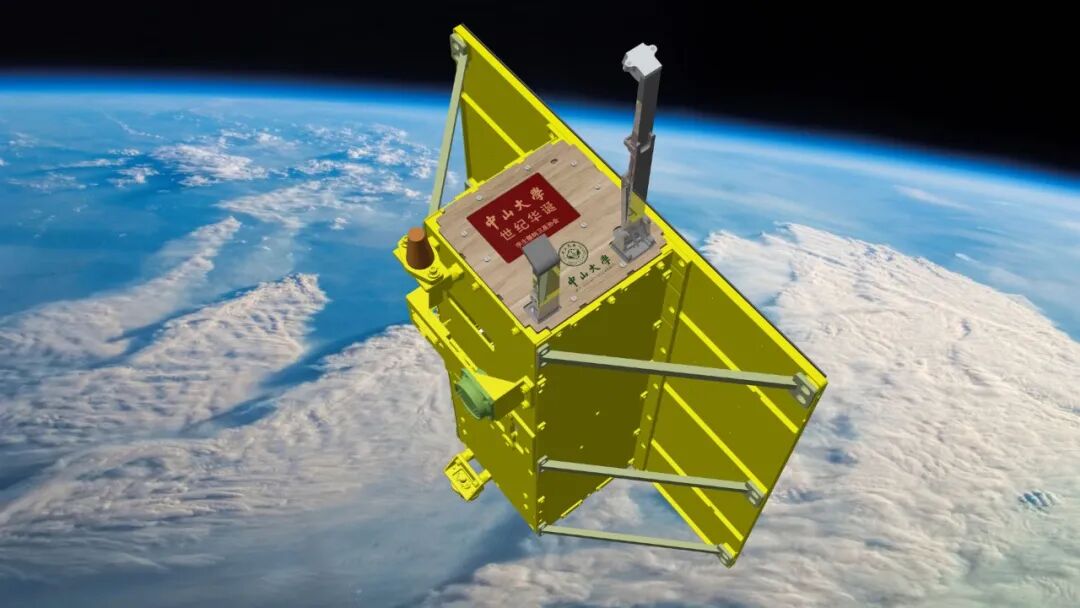
Effect diagram
In addition, the satellite also carries a retractable selfie stick, externally connected to a COTS micro-camera, controlled by a Raspberry Pi to conduct convenient payload development technology experiments based on the Raspberry Pi, enhancing payload computing capabilities, reducing development cycles, and improving in-orbit reliability through cold backup methods. During its orbit, the satellite can take selfies with the Earth while also conducting autonomous monitoring of its operational status in orbit.
In addition to the hard work of the development team, the satellite development journey also relies heavily on the strong support of the college and mentor group.
“The college has always adhered to the fundamental task of cultivating virtue and talent, striving to improve the quality of talent training and the level of discipline construction, and has given us a lot of support. The mentor group led by Professor Zhang Jinxiu not only provides guidance in professional knowledge but also helps us solve problems and find feasible solutions whenever we encounter difficulties in research, strictly guarding the gates of innovation and quality.”
With the care and support from all sides, the satellite development project has stable support and guarantees, and Wang Hui’s ‘star-making’ journey has become increasingly confident and determined.

The starlight does not ask the traveler

On the road to pursuing dreams in aerospace, Wang Hui has never forgotten the social responsibility of being a researcher. He not only focuses on research and innovation in satellite technology but also actively participates in public welfare activities, practicing social responsibility, closely integrating personal pursuits with social needs.
“Doing research is not just to satisfy one’s curiosity; ultimately, it is to give back to society,” Wang Hui said in an interview.
Outside of his busy academic research schedule, he has also led members of the Sun Yat-sen University Micro-Nano Satellite Association to conduct aerospace-related science popularization lectures in dozens of well-known primary and secondary schools, including Shenzhen Middle School, Guangdong Experimental Middle School, and Sun Yat-sen University Affiliated Middle School, and has long served as a ‘little mentor’ in the college’s aerospace knowledge popularization team, explaining aerospace knowledge to young people in an easy-to-understand way, inspiring their love for aerospace.

Wang Hui giving a science popularization lecture to primary and secondary school students
In each preparation for the lecture, Wang Hui takes time outside of class to work with junior students to prepare handouts and PPTs, ensuring the content is both rich and lively. During the explanation, he introduces vivid examples and interactive segments, allowing students to not only learn knowledge but also feel the charm of the aerospace industry. Wang Hui candidly expressed that he feels very fortunate to have met a group of like-minded partners who also love aerospace, and the achievements are inseparable from the hard work of every team member.

Wang Hui and members of the Sun Yat-sen University Micro-Nano Satellite Association conducting science popularization activities
As an engineering doctoral student, Wang Hui’s research tasks are already quite heavy. How can he balance advancing normal research tasks, meeting graduation requirements, leading a team to develop satellites, diligently engaging in science popularization work, and participating in various innovation competitions? Faced with what seems like an incredible workload, Wang Hui appears quite relaxed. He suggests that one should allocate time and energy reasonably to ensure full commitment to each task, avoiding internal friction. Wang Hui lists important tasks each day, arranging his daily tasks with small notes, so even when facing multiple tasks, he can proceed with each one in an orderly manner. Wang Hui’s daily routine is also very regular; he arrives at the lab before 9 AM and almost never returns to his dormitory before 11 PM.
His ability to withstand pressure is also a secret to Wang Hui’s calm response to the numerous challenges in research. He understands that the road of scientific research is not smooth, and each stage may be accompanied by failures and setbacks. Especially during the satellite development process, technical challenges frequently arise, and Wang Hui often needs to make decisions under great pressure. Therefore, when faced with setbacks, he first clarifies his thoughts, reasonably breaks down tasks, and finds his rhythm and methods within complex tasks.

Wang Hui participating in the 2023 Sun Yat-sen University Student of the Year defense
At the recent establishment meeting of the Sun Yat-sen University School of Aerospace Engineering Alumni Council, Wang Hui reported the latest progress of the CubeSat project to alumni and faculty. Currently, the development work of the project’s first satellite, ‘Yixian-A’, is nearing completion, with plans for a launch in November. The meeting also held a sponsorship ceremony for the Yixian-A satellite and a handover ceremony of the Yixian-A engineering sample to the university museum (historical museum). In the future, everyone will be able to see this satellite developed by Sun Yat-sen University students in the university museum!
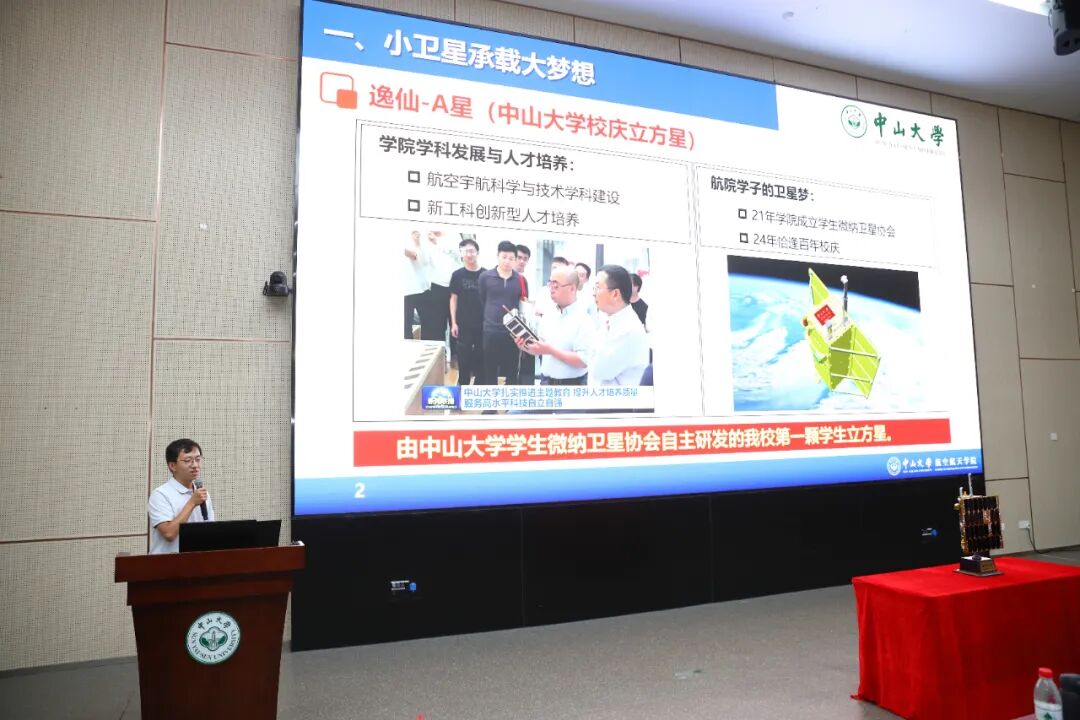
Wang Hui reporting project progress
★
Wang Hui’s goals extend far beyond this satellite
He briefly introduced the team’s future plans
hoping to cultivate continuous innovation capabilities through satellite development work
and also looking forward to leveraging the university’s multidisciplinary advantages through the ‘Aerospace + X’ cooperation model
to create a series of ‘Yixian’ experimental satellites
to continue the aerospace dream of Sun Yat-sen University people
The future path in aerospace remains long and unknown
but Wang Hui firmly believes
that no matter what challenges arise
he will face each new leap
with unwavering faith and fearless attitude
towards the stars and the sea
in pursuit of an even more brilliant future
▼ Recommended Reading ▼
Click the image to learn more
▼When the 100-year-old Sun Yat-sen University meets the 105-year-old Nankai…..

▼Exclusive avatar frame and wallpaper for the century of Sun Yat-sen University, here it comes!
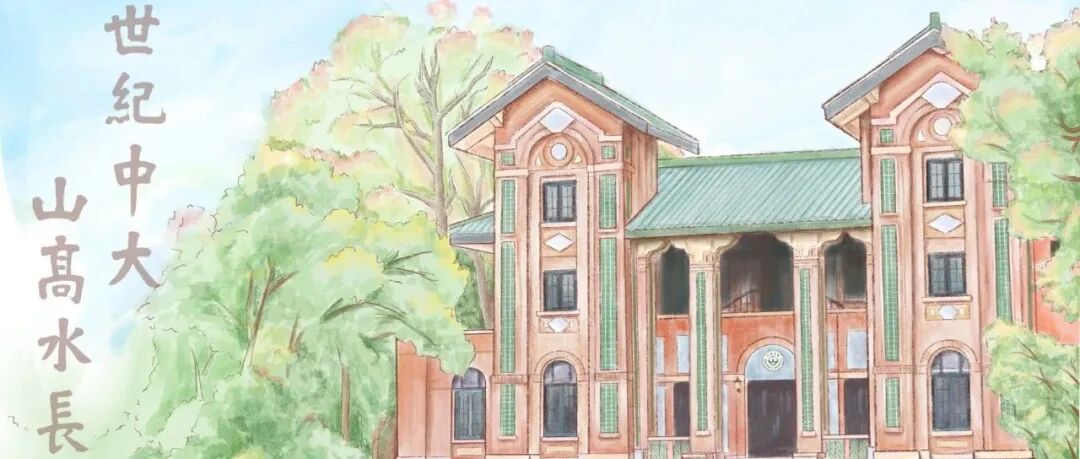
▼ Embracing the world of Sun Yat-sen University | The ‘Belt and Road’ crosses mountains and seas, working together
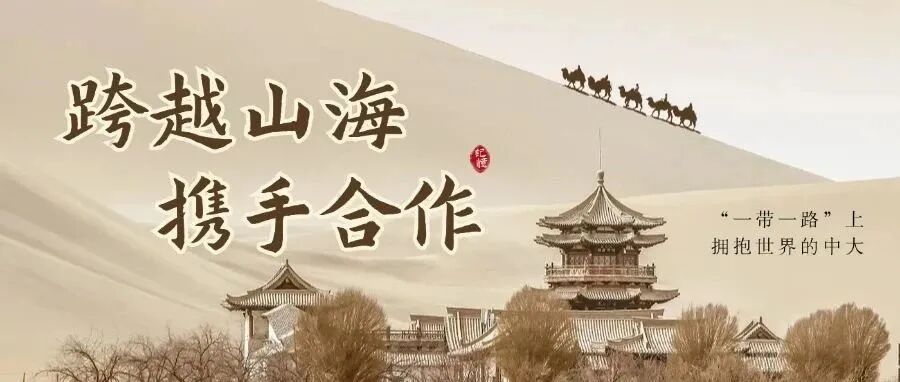
— iSYSU —
Source: Publicity Department of Sun Yat-sen University
Thanks: School of Aerospace Engineering, Sun Yat-sen University
Text: Li Wenrui, Peng Junqi, Liu Junpeng
Photography: Li Wenrui, Zheng Yiting
Some images provided by the School of Aerospace Engineering
Layout: Li Wenrui
First Reader: Yu Ting
Initial Review: Liu Junpeng
Review: Sun Yaobin
Approved for Release: Huang Yan
Welcome to submit articles & join us
